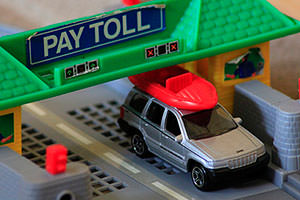Center for Auto Safety Dissatisfied With Chrysler’s Jeep Recall
The nonprofit group The Center for Auto Safety says that Chrysler’s Jeep recall, which the car manufacturer finally agreed to June 18 after an ongoing battle with the National Highway Traffic Safety Administration, is insufficient and will not fix the vehicle’s defect.
By Thomas Hedges, Center for Study of Responsive Law
The nonprofit group The Center for Auto Safety says that Chrysler’s Jeep recall, which the car manufacturer finally agreed to June 18 after an ongoing battle with the National Highway Traffic Safety Administration, is insufficient and will not fix the vehicle’s defect. At issue is the placement of the Jeep’s fuel tank at the rear of the SUV; regulators say its position there presents a fire hazard if the car is struck from behind.
In response to a demand for action from the Center for Auto Safety and the NHTSA, as well as consumers, Chrysler has agreed to inspect 1.6 million of its Jeep models built between 1993 and 2007 and install a trailer hitch to protect the vehicles’ back end, free of charge. Owners of an additional million cars have the option to bring them in for an inspection.
But these services and upgrades will not help reduce the number of deaths that result from rear-end collision fires, Center for Auto Safety Executive Director Clarence Ditlow said in an interview last week.
“The trailer hitch,” he explained, “doesn’t provide any protection from the primary failure mode in these crashes, which is the nose of the striking car coming under the bumper and impacting the gas tank. If it goes under the bumper, it will go under the trailer hitch.”
The NHTSA reports that 51 people have died in rear-end collision fires in Jeep Grand Cherokee and Liberty models.
Chrysler Group disagreed with the NHTSA’s findings about the placement of the fuel tank, saying in a statement that “the subject vehicles are not defective,” and “these Jeep vehicles have proven to be safe in operation and the Company’s analysis shows the incidents at the focus of this request occur less than one time for every million years of vehicle operation” (Chrysler’s emphasis).
Ditlow is also frustrated because Chrysler’s 2005 and 2008 Jeep models, for which it moved the fuel tank in front of the rear axle, have not been involved in any fires that resulted in deaths. This, for Ditlow, is evidence that it is the placement of the tank that poses a hazard to drivers of the other models. Chrysler, however, has refused to acknowledge any dangers relating to its Jeep vehicles.
The idea of installing a trailer hitch is a calculated PR stunt, Ditlow argued. “A trailer hitch, which provides incremental protection in low-speed crashes only, fits in with [Chrysler’s] strategy that the crashes that kill all the people are unsurvivable crashes,” he said. In other words, since trailer hitches help only in low-speed collisions, which have not been reported to kill anybody, the numbers will stay the same and give the impression that the recall did not really accomplish anything.
Ditlow contended that “if they admitted that putting a skid plate underneath [the fuel tank] worked,” because it cushions more than a trailer hitch, “it would protect against these higher speed crashes” and prove that Chrysler’s assessments of its vehicles were wrong.
“If Chrysler cared about Jeep owners,” he pointed out, “they would have done a recall that provided adequate protection in crashes up to at least 50 mph into the rear of the vehicle. It just shows that Chrysler doesn’t care.”
This article was made possible by the Center for Study of Responsive Law.
Your support matters…Independent journalism is under threat and overshadowed by heavily funded mainstream media.
You can help level the playing field. Become a member.
Your tax-deductible contribution keeps us digging beneath the headlines to give you thought-provoking, investigative reporting and analysis that unearths what's really happening- without compromise.
Give today to support our courageous, independent journalists.




You need to be a supporter to comment.
There are currently no responses to this article.
Be the first to respond.